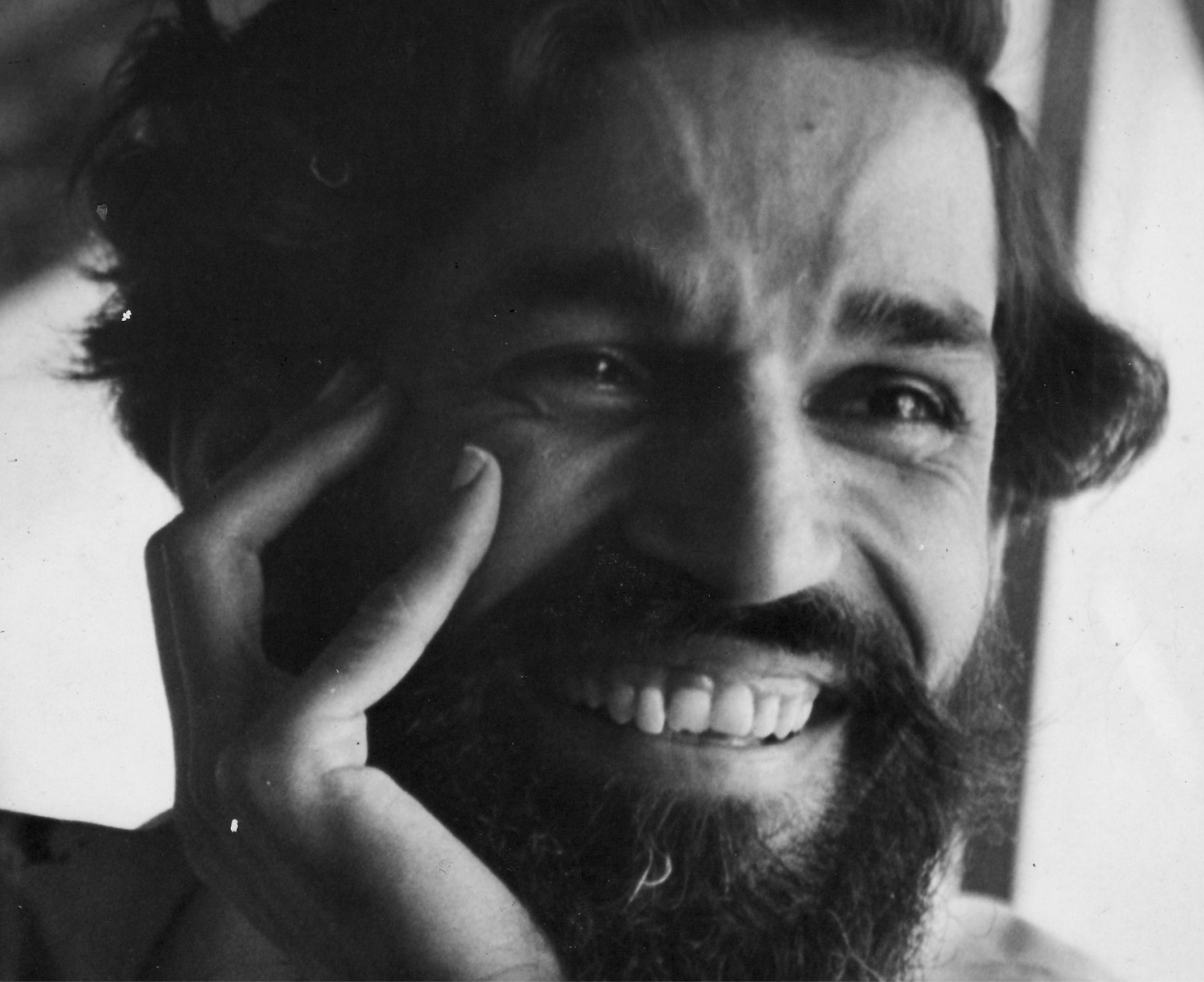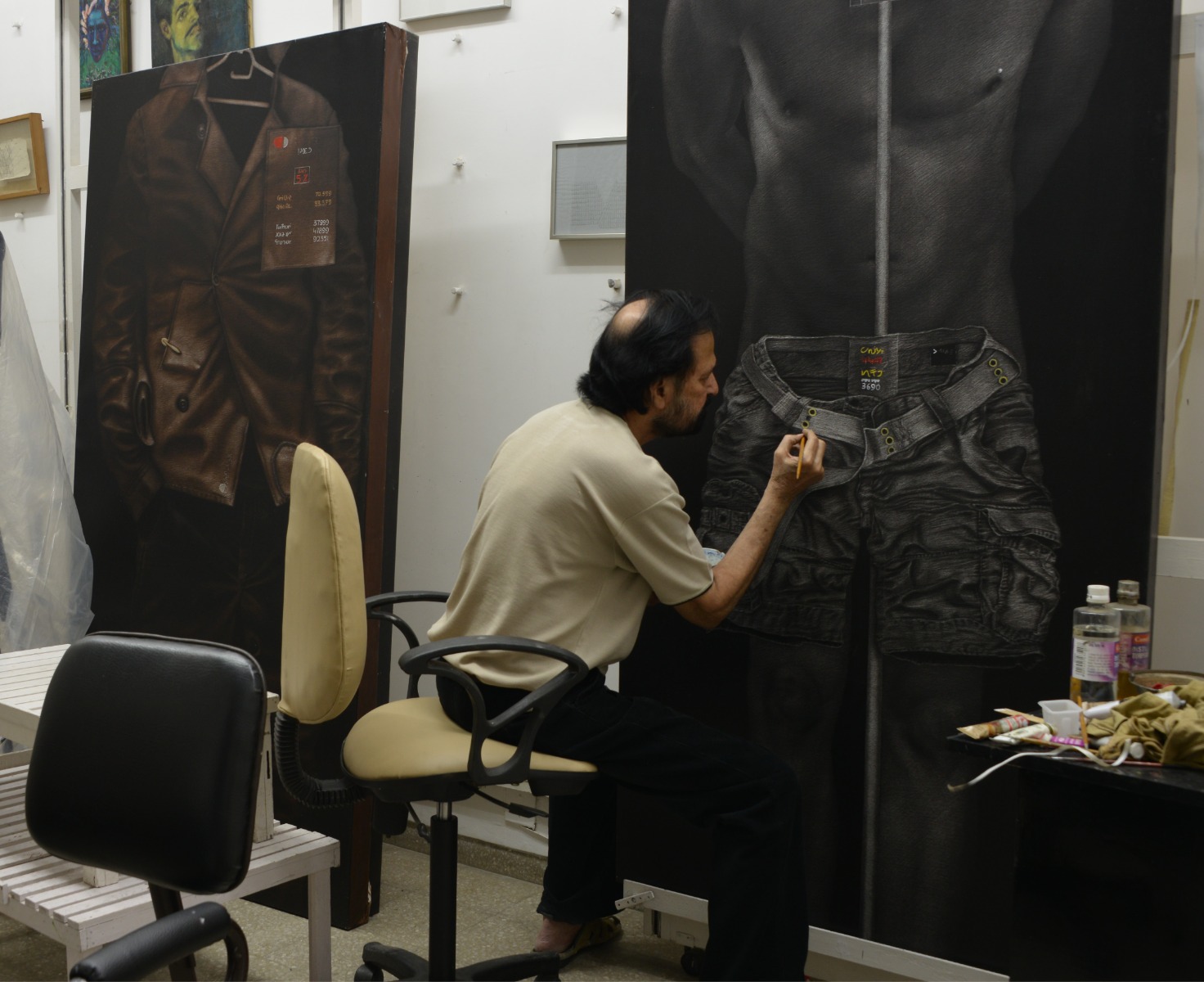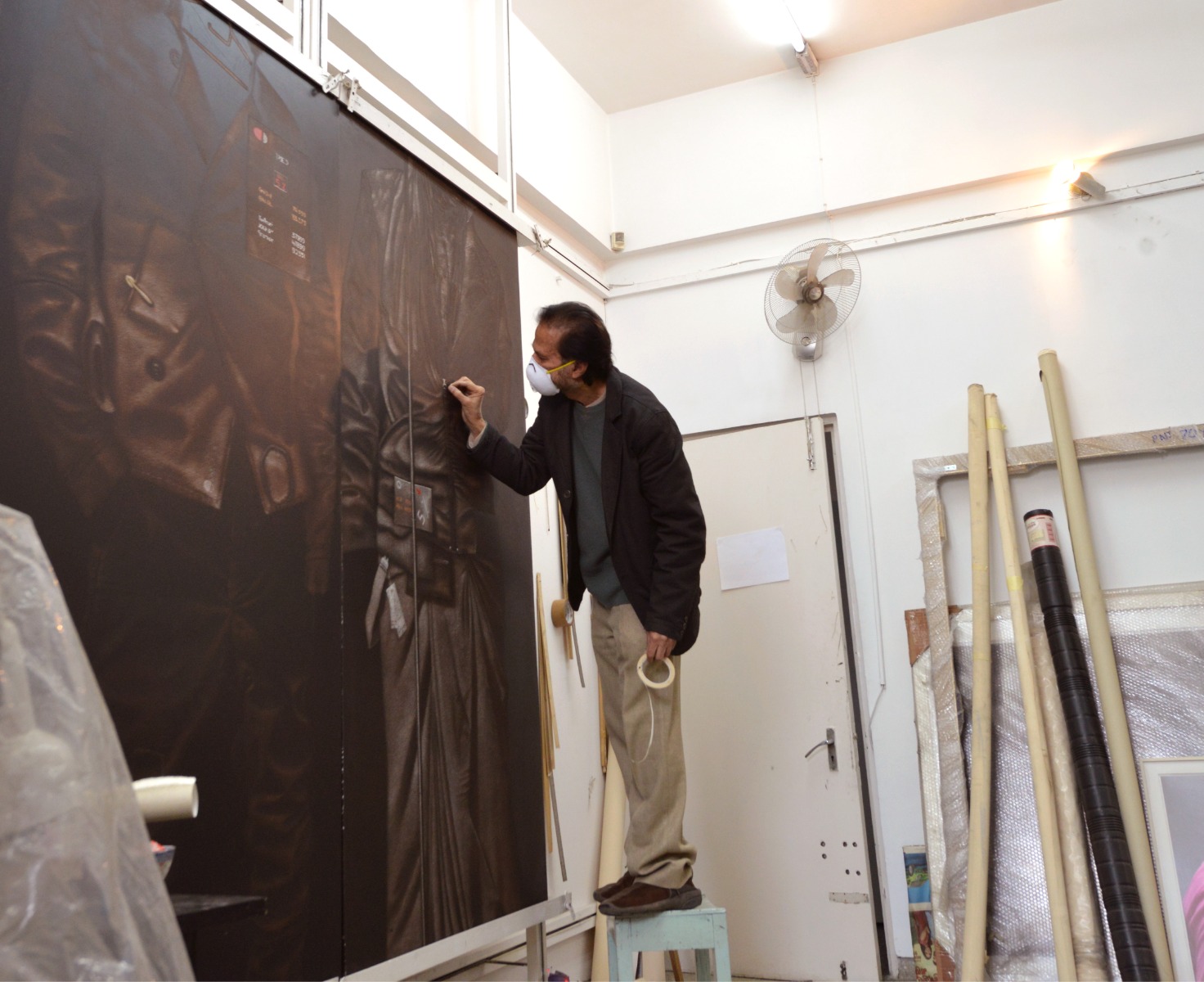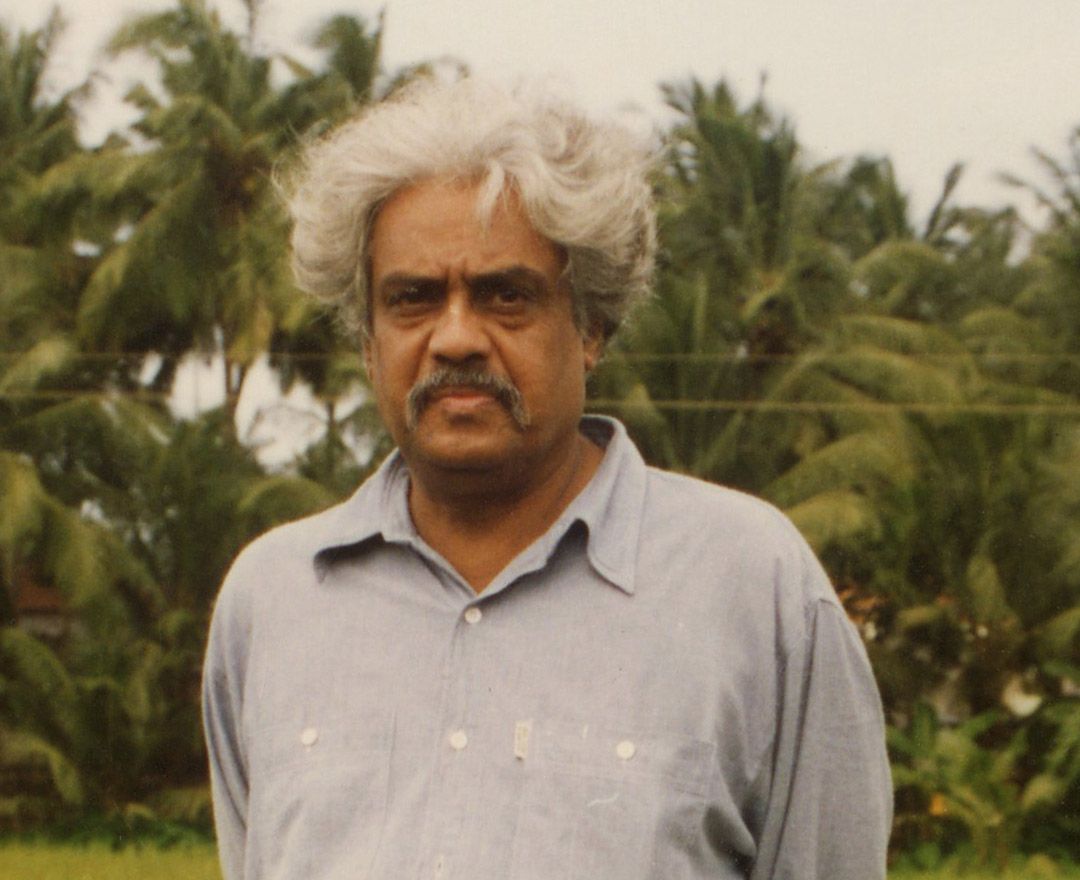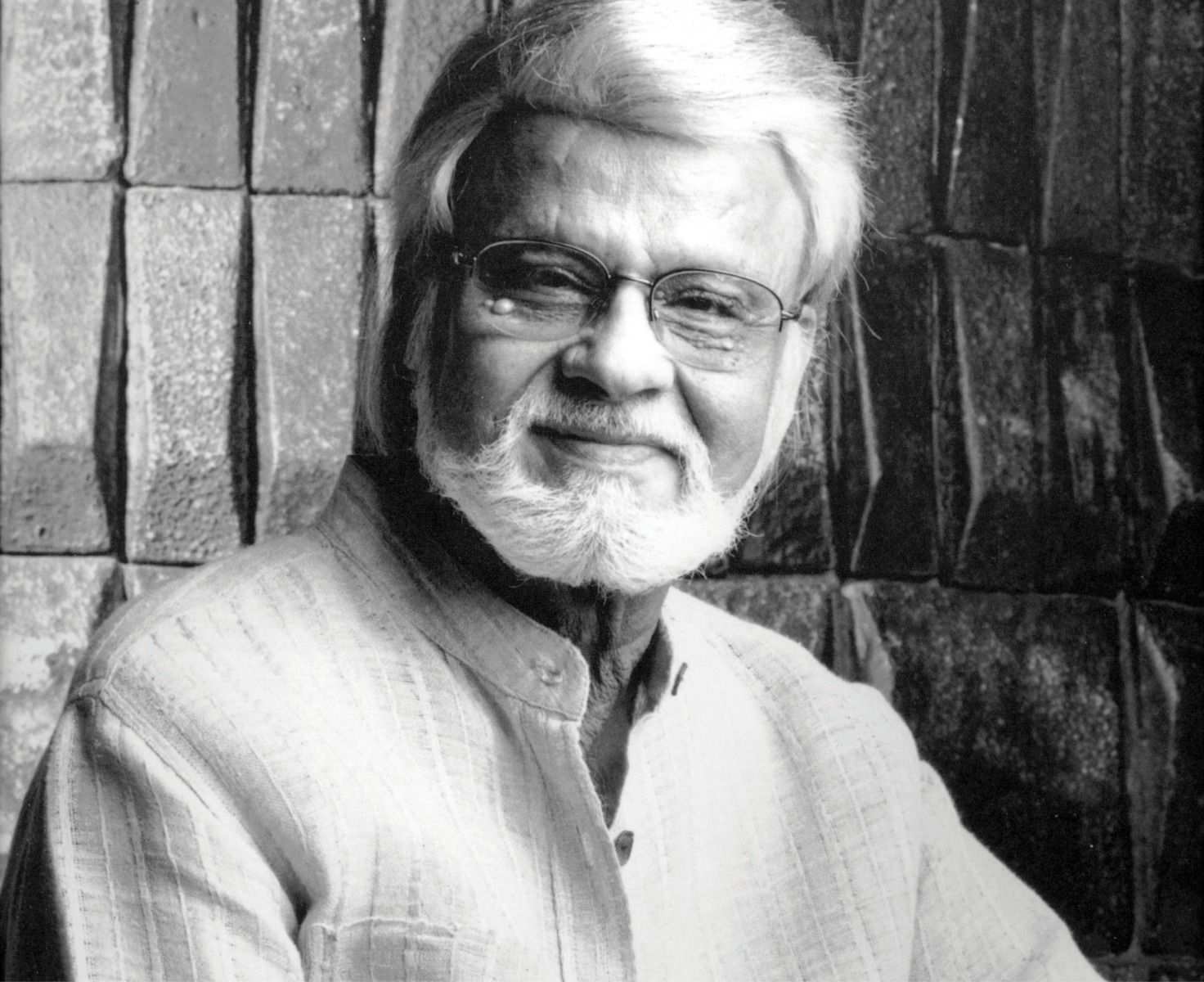1941

Is born in New Delhi.
1963-67
Begins his career in the city as a teacher at Jamia Millia Islamia Higher
Secondary School, Sarada Ukil School of Art, and, intermittently, at
his alma mater, as a visiting lecturer.
1964
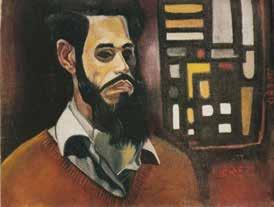
Becomes involved with Silpi Chakra group, holding office as its
secretary and chairman over the years. Continues to paint portraits and self-portraits.
1967
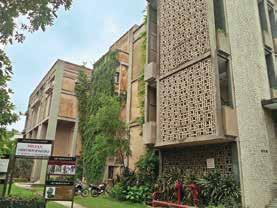
Joins as head of department of fine arts at Triveni Kala Sangam.
Breaks away from portraiture to use the ‘body’, absent from his
portraits, as the core medium of his expression. Paints a series of
large format paintings depicting emaciated labourers.
1970
Begins his Ape series depicting grotesque, hybrid, gorilla-like figures
to express his concern about materialism in society.
1971
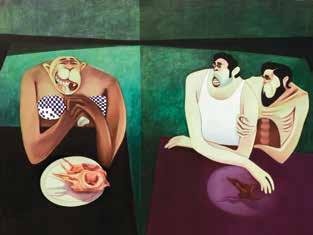
Exhibits the Ape paintings in 'Words and Lines' exhibition with artist
K. Khosa.
1973
Receives the All India Fine Arts and Crafts award, winning it again
in 1975.
1974
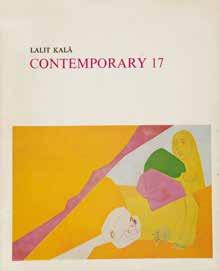
Keshav Malik writes, ‘Broota’s are competent paintings in the
best painterly sense, and that is why they generally succeed as
images that disturb one’s complacence’ in an essay in Lalit Kala
Contemporary 17.
1975
Participates in the third International Triennale in New Delhi
organised by Lalit Kala Akademi.
1976
Travels to France to participate in the Cagnes-Sur Mer international
art fair.
1977
Participates in Lalit Kala Akademi’s group show, 'Pictorial Space'.
1978
Is part of the fourth International Triennale in New Delhi.
1980s
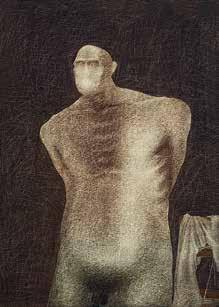
Begins his Man series, shifting his focus from outward concerns to
looking inwards; evolves a new technique in his painting in which he
meticulously scrapes out layers of flat monochromatic paint with the
sharp edge of a broken blade.
1980,'81,'84
Receives Lalit Kala Akademi’s National Award.
1981
Is part of the fifth International Triennale, New Delhi.
1982
His works feature in Museum of Modern Art, Oxford, England, as part
of ‘India: Myth and Reality’; and group show ‘Contemporary Indian
Paintings’ at Kunsthalle Darmstadt Museum, Germany.
1985
Experiments with photography and directs the video, The Body and
Biography of Life.
Takes part in Asia Art Biennale, Bangladesh, and Tokyo Biennale
Japan.
1986
Has his first Man series exhibition at Calcutta Art Gallery.
Participates in Baghdad International Festival for Art Biennale, Iraq;
Havana Biennale in Cuba.
1987
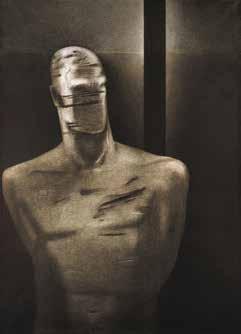
The artist’s painting, Prisoner of War, is among the top sales at
Sotheby’s Modern and Contemporary South Asian Art Auction. Participates in Coup de Coeur Festival of India in Geneva, Switzerland
1988
Receives the L. N. Gupta Memorial Award from Max Muller Bhavan,
Hyderabad.
1990s
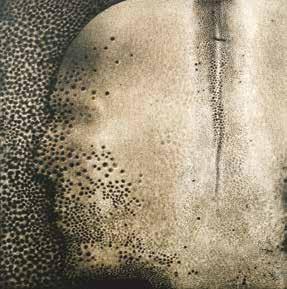
Broota eliminates the human body to move towards the abstract. In
his Traces of Man series, the human figure is almost absent from the imagery.
1995
Incorporates the use of the computer in his creative process, using it as
a sketchbook to make and manipulate images for his own reference.
1996
Is part of Pyeongtaek International Art Festival in South Korea.
1997
Receives Kala Vibhushan from A.I.F.A.C.S.
Is part of ‘Tryst with Destiny’ at Singapore Art Museum.
Broota’s works are shown at two group exhibitions organised at
National Gallery of Modern Art—those featuring Masanori Fukoka’s
comprehensive Indian art collection, and the ‘Colours of Independence’
exhibition organised by Kolkata’s C.I.M.A.
1998
His work is part of ‘Contemporary Art of India’ at Peabody Essex
Museum, U.S.A.
2000s

Conceptualises his Confrontation series in which he briefly returns to depicting close-ups of faces or the body juxtaposed threateningly with
heavy objects or machinery.
2001
His exhibition, ‘Edge of Precipice’, opens at Shridharani Gallery,
Triveni Kala Sangam, New Delhi.
2004
His ‘Archaeology of Experience’ is displayed in New Delhi, Mumbai
and Kolkata.
Three of the artist’s films—Shabash Bete (1991), The Body (1985),
and Biography of Life (1985)—screen as part of Art and Cinema
(celebrating 50 years of Lalit Kala Akademi) at the National Museum,
New Delhi.
2006
Broota’s painting, Numbers, is auctioned by Christie’s for Rs. 6.7
crore, the highest in the Indian art section.
2008
His videos are part of ‘Still Moving Image’ at Devi Art Foundation,
Gurgaon.
2010
In interviews marking the opening of the Kiran Nadar Museum of
Art, New Delhi, Kiran Nadar says the first painting she bought was a
work by Broota.
2013
Receives Lifetime Achievement Award at Lalit Arpan Festival, Asavari,
New Delhi.
2014
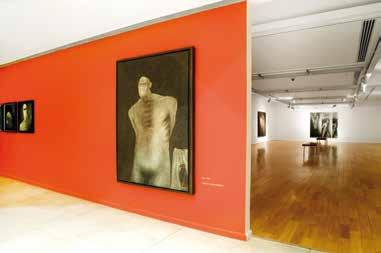

Kiran Nadar Museum of Art organises the artist’s retrospective,
‘Visions of Interiority: Interrogating the Male Body’.
His 1987 painting, Prisoner of War, is among the top sales at Sotheby’s
Modern and Contemporary South Asian Art auction.
2016
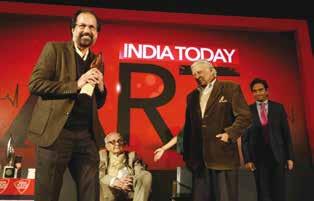
Begins experimenting with epoxy resin to create translucent sculptures
and paintings. Wins India Today's Artist of the Year award.
2018
The Stare of Destiny is exhibited at DAG’s booth at Masterpiece
London.
2020
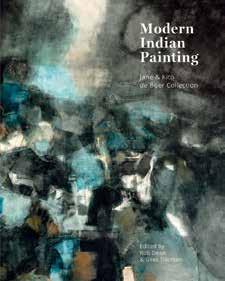
Is featured prominently in the book Modern Indian Painting featuring
works from the Jane and Kito de Boer collection.
Is ranked second second-most successful artist alive in the Hurun
India Art List 2020.
